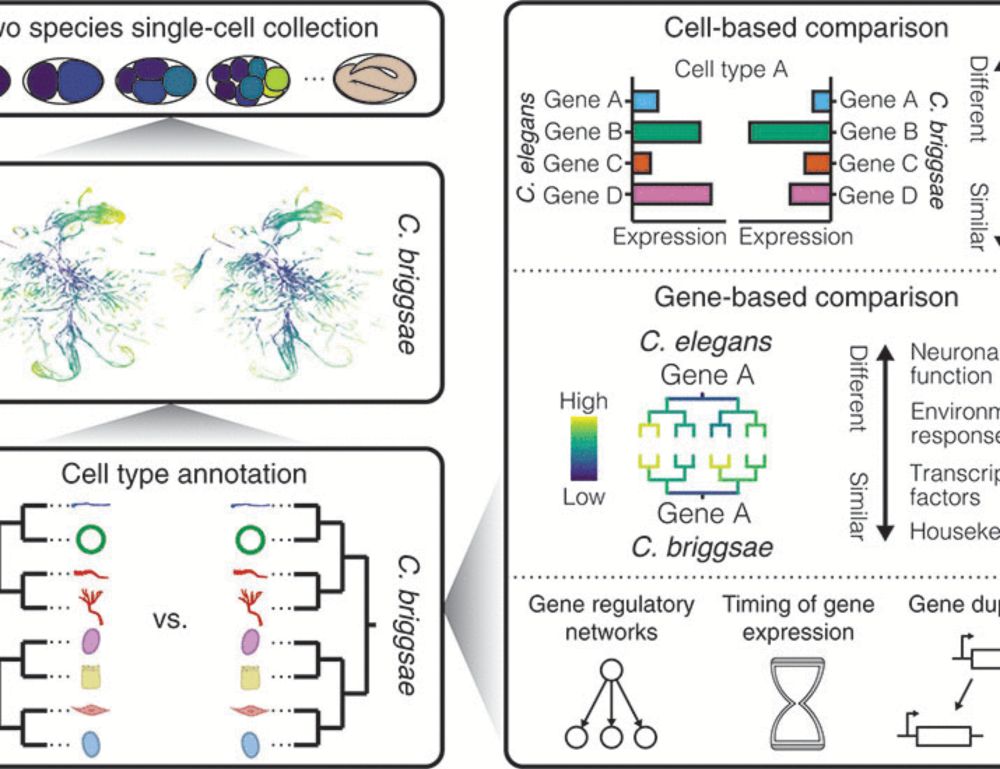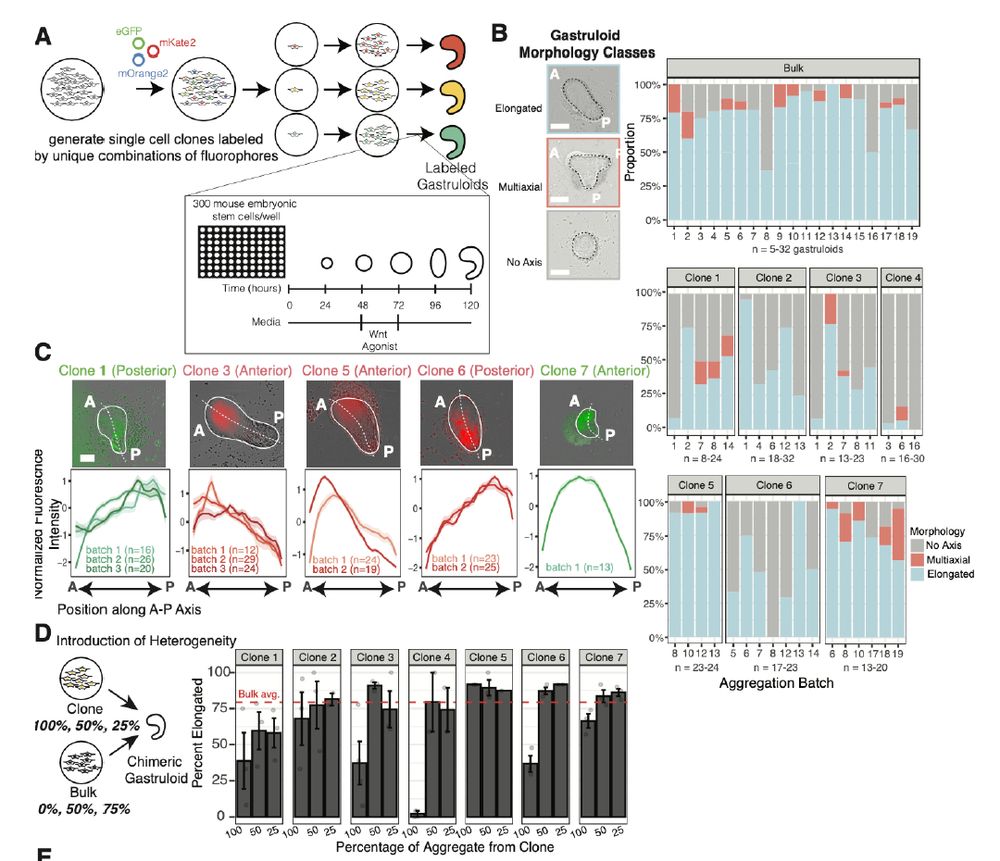
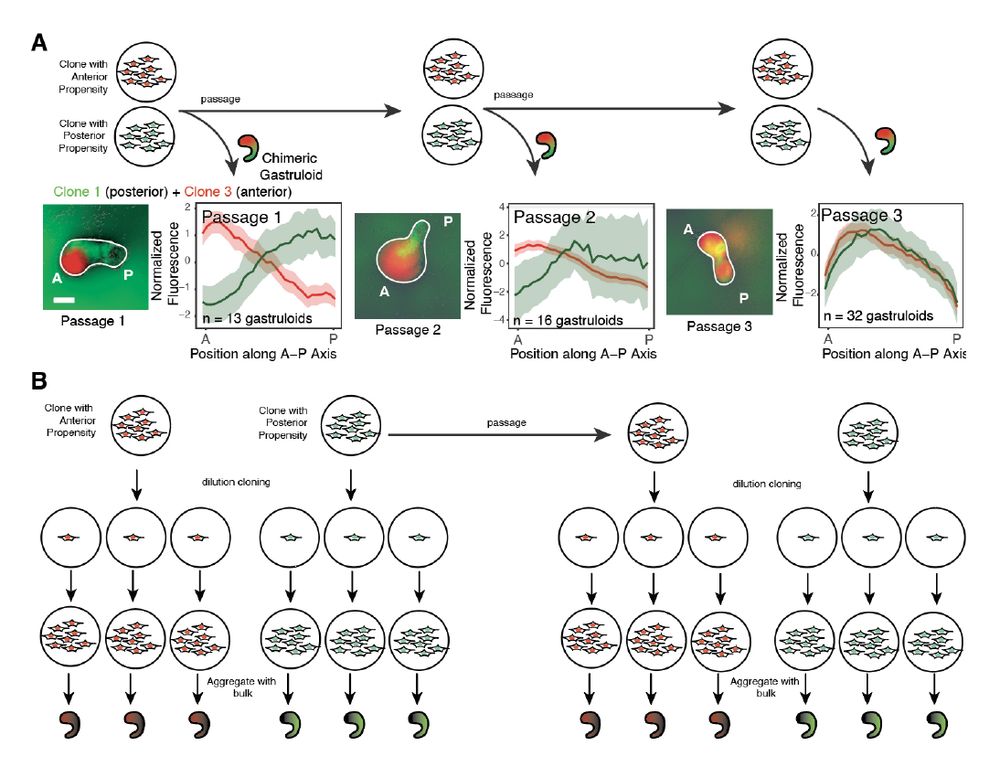
Two new preprints from the @arjunraj.bsky.social on #gastruloids. Both excellent. Exploring the relationship between macroscopic reproducibility v microscopic heterogeneity. Stunning experiments and much to think about
biorxiv.org/content/earl...
biorxiv.org/content/earl...
15.07.2025 13:28 — 👍 41 🔁 15 💬 1 📌 1
🚨 Most variant screens measure growth or abundance. What do they miss? That variants impact a spectrum of protein and cellular phenotypes. Variant in situ sequencing (VIS-seq) finds what’s missing: image cells 🔬 first, decode later, revealing multi-scale phenotypes for thousands of variants.👇
1/9
07.07.2025 02:44 — 👍 45 🔁 18 💬 3 📌 0
One thing that really bothers me with the new "virtual cell" terminology is that it is currently largely focused on a very narrow definition of models that can predict effects of trans perturbations (gene dosage, drugs etc) on gene expression. 1/
28.06.2025 10:38 — 👍 103 🔁 30 💬 1 📌 0
EPIGENETIC HULK READY TO SMASH AGAIN! GET IN LOSERS!
13.06.2025 04:30 — 👍 158 🔁 47 💬 10 📌 10
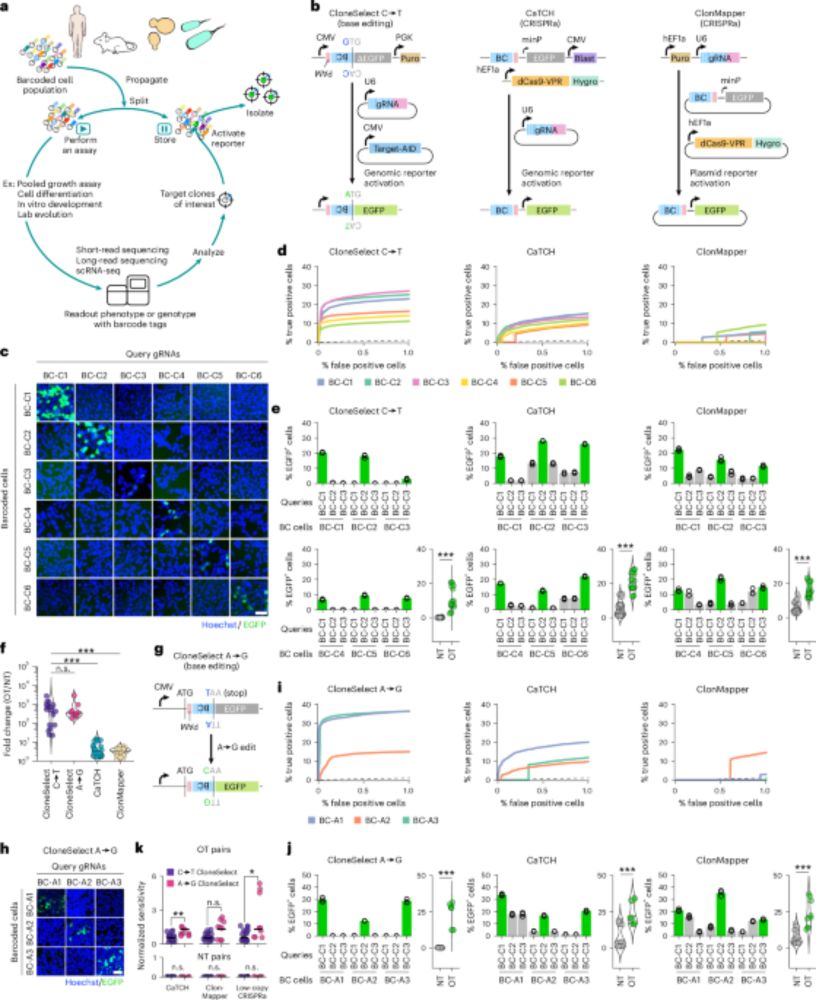
A multi-kingdom genetic barcoding system for precise clone isolation - Nature Biotechnology
A barcoded CRISPR base editing system isolates target clones from complex mammalian, yeast and bacterial populations.
CloneSelect published in Nature Biotechnology
@natbiotech.nature.com. This retrospective clone isolation method using CRISPR base editors is a powerful tool in broad biology. A history of Soh in the Yachie lab. www.nature.com/articles/s41...
21.05.2025 13:56 — 👍 28 🔁 13 💬 3 📌 0
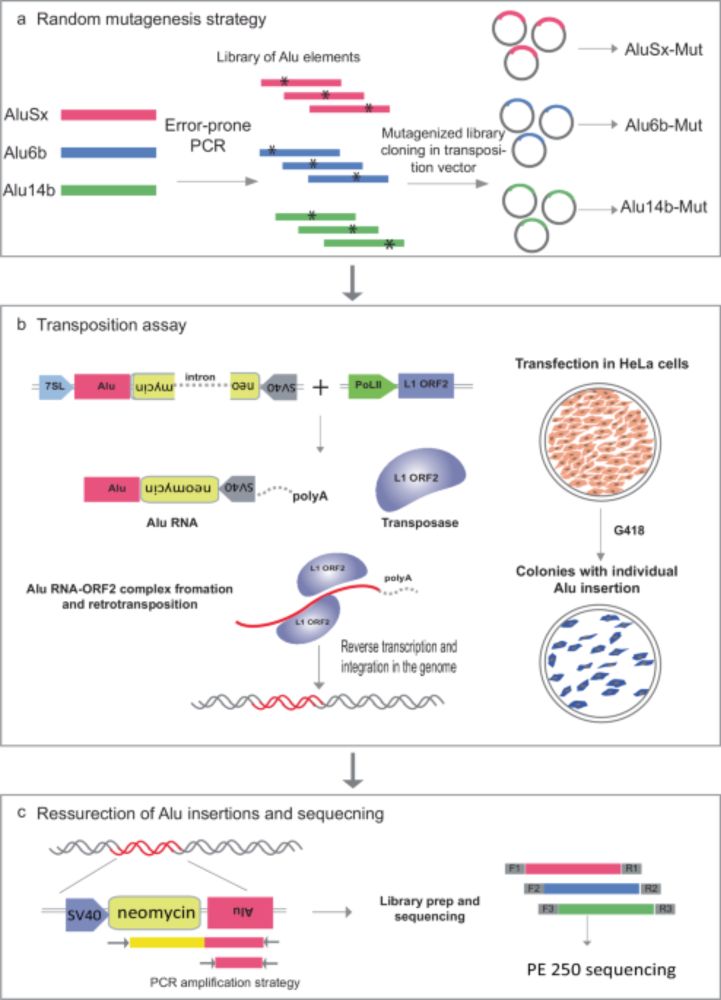
Massively parallel jumping assay decodes Alu retrotransposition activity - Nature Communications
Here, the authors develop a high-throughput assay to measure the jumping potential of thousands of transposons in parallel.
Massively parallel jumping assay (MPJA) enables to test the jumping potential of thousands of transposons. Analysis of >160,000 Alu haplotypes identified transposition-asssociated domains. Amazing work by Navneet Matharu, Jingjing Zhao, Martin Kircher and many others.
www.nature.com/articles/s41...
09.05.2025 03:50 — 👍 77 🔁 35 💬 1 📌 2
Happy to share our new review on molecular circuits for genomic recording with @chenomics.bsky.social! Here, we present our views on the remaining challenges in the field of genomic recording for reconstructing cell-fate decisions. (1/2)
06.05.2025 14:40 — 👍 15 🔁 5 💬 1 📌 0

Junior / Assistant Specialist: Kim Lab, Developmental & Cell Biology
University of California, Irvine is hiring. Apply now!
I am hiring for a research technician role in my new lab at UC Irvine studying how transcription factors control cell identity. If you know any graduating undergrads or postbacs looking for a position, please spread the word! Apply by May 9 for full consideration. recruit.ap.uci.edu/JPF09594
25.04.2025 04:55 — 👍 29 🔁 27 💬 1 📌 0
Homepage - openRxiv
openRxiv is an independent non-profit, the new organizational home for bioRxiv and medRxiv, enabling researchers to instantly share groundbreaking findings with the global scientific community.
Big news: we are setting up a new non-profit organization to run bioRxiv and medRxiv. It's called openRxiv [no it's not a new preprint server; it's dedicated organization to oversee the servers] openrxiv.org 1/n
11.03.2025 13:20 — 👍 2590 🔁 855 💬 55 📌 42
Sex Designation Change on a Birth Certificate
We are currently processing requests in three (3) business days. Please allow up to two (2) weeks for delivery and mail time for ordered certificates.
We're expediting sex designation change requests on birth certificates. People born in WA who want to change the sex designation on their birth certificate can do so by filing a request with us. . doh.wa.gov/DesignationC...
12.02.2025 22:05 — 👍 3172 🔁 1220 💬 56 📌 84

It’s been a tough few weeks. My 10yo daughter was diagnosed with a very rare, aggressive cancer called interdigitating dendritic cell sarcoma (IDCS). I’m reaching out to identify clinicians/patients who have encountered pediatric IDCS or other (non-LCH) dendritic or histiocytic sarcomas cases.
08.02.2025 21:21 — 👍 1017 🔁 863 💬 82 📌 32
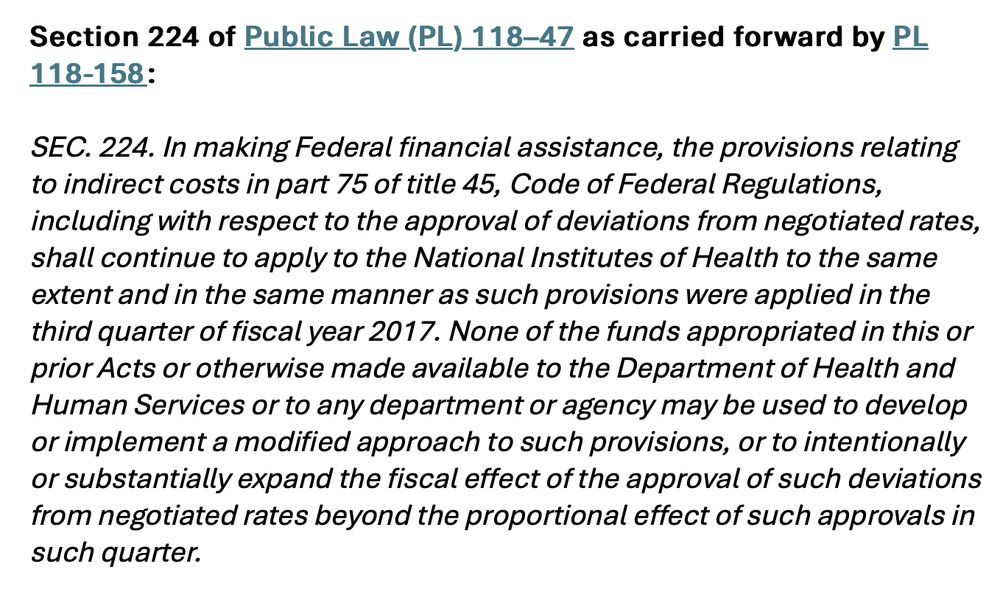
Section 224 of Public Law (PL) 118–47 as carried forward by PL 118-158:
SEC. 224. In making Federal financial assistance, the provisions relating to indirect costs in part 75 of title 45, Code of Federal Regulations, including with respect to the approval of deviations from negotiated rates, shall continue to apply to the National Institutes of Health to the same extent and in the same manner as such provisions were applied in the third quarter of fiscal year 2017. None of the funds appropriated in this or prior Acts or otherwise made available to the Department of Health and Human Services or to any department or agency may be used to develop or implement a modified approach to such provisions, or to intentionally or substantially expand the fiscal effect of the approval of such deviations from negotiated rates beyond the proportional effect of such approvals in such quarter.
Here's a very important update from the AAMC (Association of American Medical Colleges) on the proposed cuts to NIH Indirect costs: "Every year since 2017, the annual spending bill that funds NIH has included language prohibiting the Administration from making changes to F&A cost rates" 1/2 🧪
08.02.2025 14:43 — 👍 140 🔁 74 💬 5 📌 6
🧬@science.org Multiplex generation and single-cell analysis of structural variants in mammalian genomes bit.ly/4hzFRMg @sudpinglay.bsky.social www.pinglay-lab.com @jshendure.bsky.social et al. @brotmanbaty.bsky.social @hhmi.bsky.social #synbio #genome
01.02.2025 18:47 — 👍 7 🔁 1 💬 0 📌 0
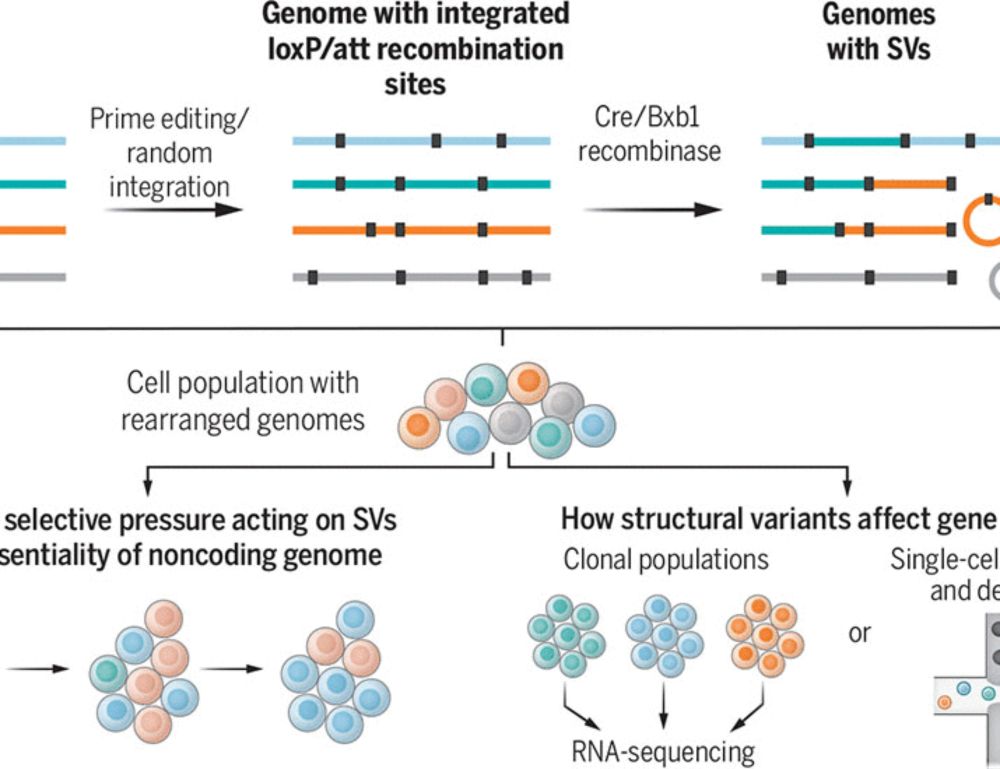
Genome recombination on demand
Large genome rearrangements in mammalian cells can be generated at scale
Lars Steinmetz and @seczmarta.bsky.social put together a wonderful perspective on these two studies. www.science.org/doi/10.1126/...
31.01.2025 13:48 — 👍 12 🔁 5 💬 2 📌 0
Beware! AAV libraries prone to length & homology dependent chimerism! Our latest preprint, from the brilliant @jblalanne.bsky.social, was a true surprise as related phenomena are textbook for lentivirus (highly relevant to HIV & Perturb-seq) yet to our reading not known for AAV tinyurl.com/5amc562a
17.01.2025 18:17 — 👍 26 🔁 10 💬 2 📌 0
Brief PSA for the functional genomics community: if you are profiling complex libraries with >1 internal components (e.g., enhancer+barcodes in MPRAs) delivered via AAVs, be aware that there might be substantial unlinking within your libraries if you packaged as a pool! doi.org/10.1101/2025...
17.01.2025 15:53 — 👍 16 🔁 5 💬 1 📌 2
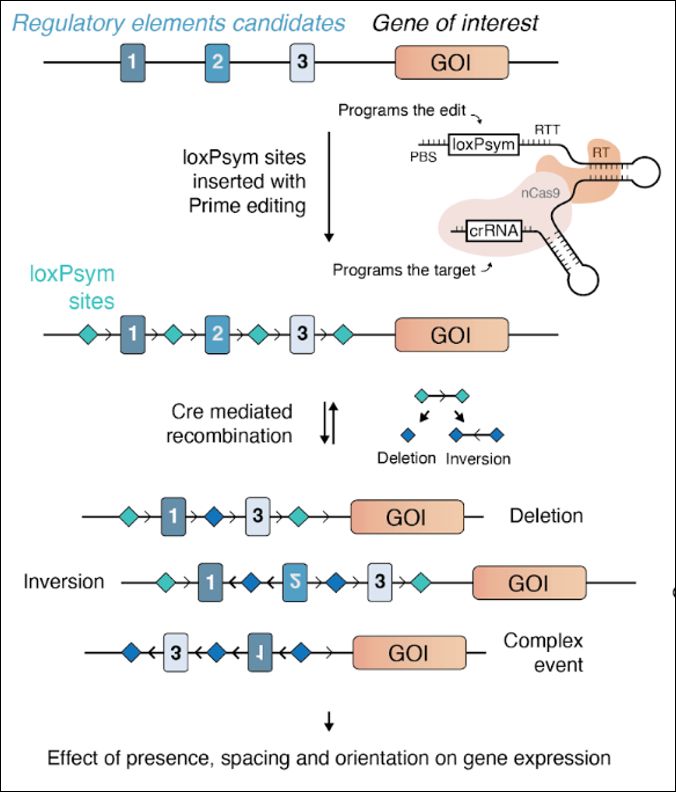
Enhancer scrambling strategy
We are happy to share our enhancer scramble story, a strategy to create hundreds of stochastic deletions, inversions, and duplications within mammalian gene regulatory regions and associate these new architectures with gene expression levels 🧵
www.biorxiv.org/content/10.1...
15.01.2025 20:32 — 👍 182 🔁 77 💬 3 📌 2
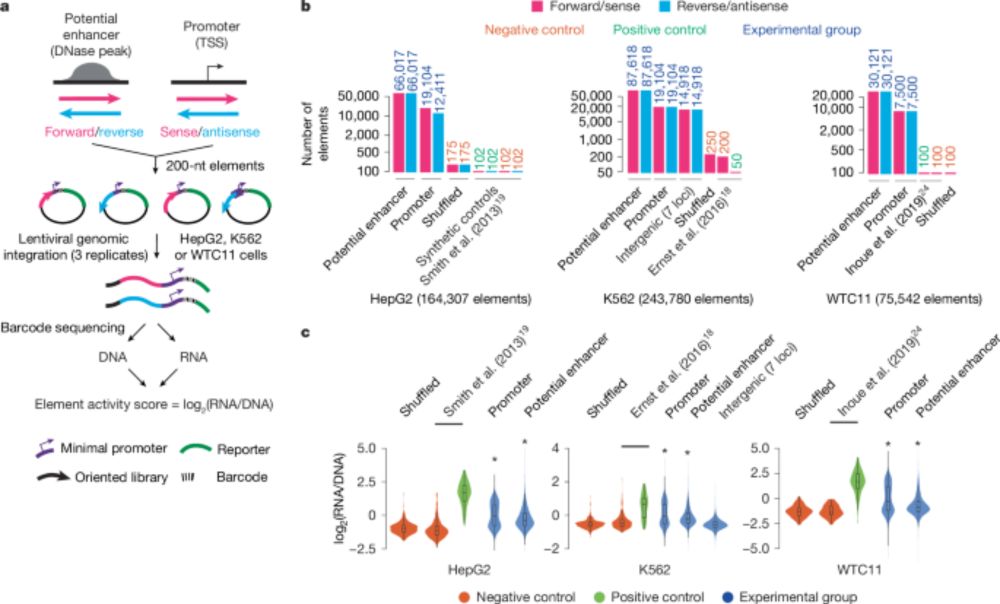
Massively parallel characterization of transcriptional regulatory elements - Nature
Lentivirus-based reporter assays for 680,000 regulatory sequences from three cell lines coupled to machine-learning models lead to insights into the grammar of cis-regulatory elements.
Massively parallel reporter assays (MPRAs) testing >680,000 sequences combined with machine learning to improve regulatory element & variant effect prediction. Amazing work by @vagar.bsky.social, Fumitaka Inoue, @jshendure.bsky.social and many others as part of ENCODE.
www.nature.com/articles/s41...
15.01.2025 17:05 — 👍 96 🔁 40 💬 1 📌 2
EPIGENETIC HULK SMASH PUNY GENOME. MAKE GENOME GO. LOCATION: NOT CENTROMERE, THAT FOR SURE
Co-Founder of LinkedIn. Focused on using AI to find the cure for cancer, faster.
Writing, Pod, ETC: Beacons.ai/reidhoffman
News from the Sternberg lab at Columbia University, Howard Hughes Medical Institute.
Posts are from lab members and not Samuel Sternberg unless signed SHS. Posts represent personal views only.
Visit us at www.sternberglab.org
Husband, Father and grandfather, Datahound, Dog lover, Fan of Celtic music, Former NIGMS director, Former EiC of Science magazine, Stand Up for Science advisor, Pittsburgh, PA
NIH Dashboard: https://jeremymberg.github.io/jeremyberg.github.io/index.html
Executive Director, Good Science Project
Dad, husband, President, citizen. barackobama.com
Special correspondent at Vanity Fair and host of the Fast politics podcast and MSNBC
Associate Dean for data science, and Professor of Medicine and Human Genetics at the University of Chicago.
#FreePalestine #StandWithUkraine #DownWithDictators #PunchNazis #LandBack #Reparations #MMIW
Avid Reader ° Aspiring Runner ° Amateur Photographer
I'm partial to Bourbon | Scotch | Mezcal | Stout | Porter
I don't respond to donation requests.
Doudna Lab at UC Berkeley, Innovative Genomics Institute founder, CRISPR co-inventor and Nobel laureate innovativegenomics.org/
My lab works on genome evolution, using yeast genetics and genomics. Chair, Department of Genome Sciences at University of Washington.
Lab website: https://depts.washington.edu/dunhamlab/
PI @ UW Genome Sciences | chromosome biology | 3D genome | chromatin | single cell & spatial biology
We develop technologies to study genomes and the things that are made from them. Avid FISHer.
beliveau.io
Scientist. Artist. UAW4121 steward. Opinions are my own. All Crows Are Beautiful 🖤
Postdoctoral researcher @harvardmed
Rapid evolutionary dynamics in viruses, cancer and bacteria. Assistant professor at UW Genome Sciences. federlab.github.io
Assistant Professor @ Stanford Genetics & BASE Initiative. Mapping the regulatory code of the human genome to understand heart development and disease. www.engreitzlab.org


